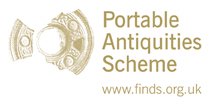Server check!
You are on the training database
Punches
Larger and stronger than their close cousins awls, these implements typically have a thickness over 3mm. Cross-section is rectangular or square, continuing so towards the two ends these, of equal length, are both (often bluntly) pointed and often rounded, unless one is left as a tang (in which case it is usually flattened). The tang or non-working point can be butted for hammering the punch into surfaces, such as metal. Punches were used to punch holes in items such as leather and thin sheets of metal. They can be tanged and would have had handles made from organic materials.
Dating and distribution
Date: 1000-700 BC
Distribution: Britain
Example
 PAS record number: NMS-9B6D51
PAS record number: NMS-9B6D51
Object type: Punch
Broadperiod: Bronze Age
County of discovery: Norfolk
Stable url: http://finds.org.uk/database/artefacts/record/id/123159
References
- Rowlands, M.J. 1976 'The Production and Distribution of Metalwork in the Middle Bronze Age in Southern Britain: Part ii'. Oxford: British Archaeological Reports.


